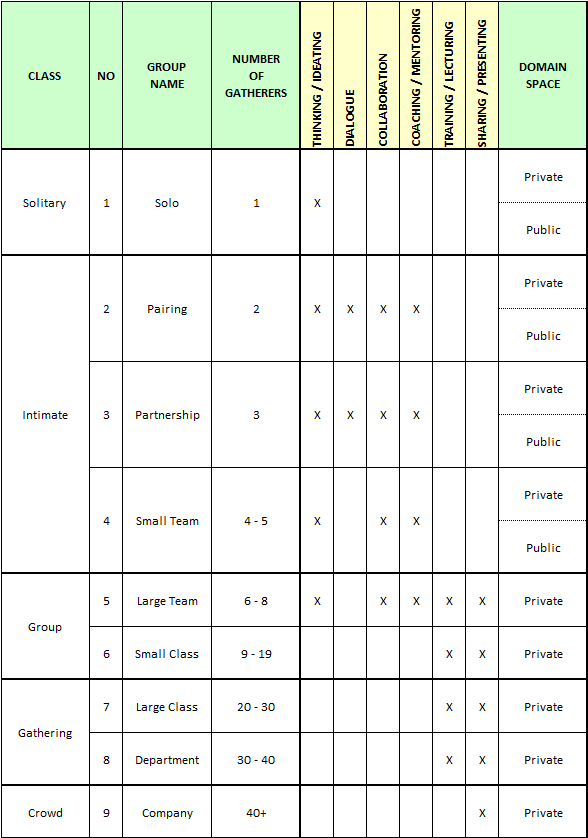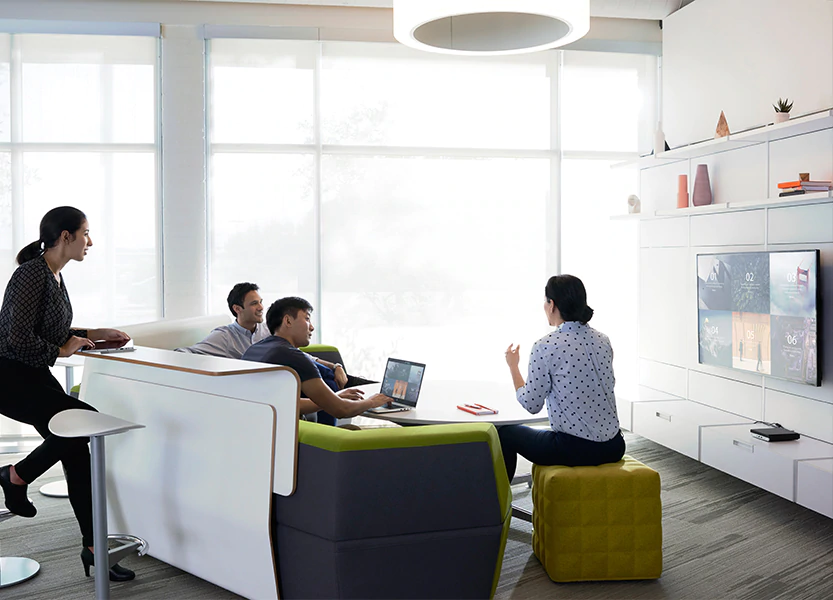The Dynamics of Innovation (Innovation Space) Design Guide (Dynannova) is Legacy Innovation Group's highly unique model of group interaction and innovation work that we use in the design of innovation spaces.
We developed this model because the built environment into which innovators are immersed has a profound impact on their psychological tendency, and their practical ability, to collaborate and to innovate, and because physical spaces are increasingly understood as catalysts for new ways of seeing and thinking. They encourage new perspectives that break open our mental pathways to whole new possibilities of what might be.
The Dynannova Design Guide provides a powerful tool for designing interaction spaces that maximize the tendency to innovate and the ability to collaborate. The resulting spaces – referred to as Dynannova Designs™ – have elements that are both singular and communal, as both are critical to innovation productivity.
The Dynannova Design Guide begins by characterizing five (5) different classes of gathering based on the purpose of the gathering, the number of gatherers, and whether the space is to be in more of a public setting or a private setting. These five classes are "Solitary", "Intimate", "Group", "Gathering", and "Crowd", respectively. These five classes are further broken down into nine (9) distinct group designations. These classes and groups are shown in the following table:

The Dynannova Design Guide next dictates specific details of what the interaction space should involve, including the characteristic environment, the characteristic lighting, and the characteristic furnishings. Finally, the model dictates certain details of the set–up based on key psychological and environmental considerations. Thus, for each of the nine unique groups, we define a specific combination of environment, lighting, furnishings, and set–up that will optimize the ability to collaborate and the tendency to pursue innovative thinking for that particular gathering.
As a whole, the overall space will be a clustering of the different individual spaces, with the aggregate result being a total built environment that can facilitate any number of different gatherings and interactions while optimizing each one. The frequency of each type of space and their respective arrangements are subsequently dictated by the unique needs of the client organization's situation. Very important here also is the "flow" of activities and energy throughout the overall space. This should help bring "life" to the space while encouraging a natural sequence of activities relating to the innovation work that is to be accomplished therein.
The final icing on the cake is the exact choice of colors, finishes, embellishments, and other interior design details. These come out of the work of our Interior Designer based on the client's particular objectives, culture, and the surrounding environment into which the space is to integrate.
Dynnanova provides the basis for our consulting work in Innovation Space Design (in which we design innovation and collaboration spaces for clients using this design guide). To learn more, please see our Innovation Spaces Consulting page, or to engage us in this capacity, refer to our Management Practice Engagement page.

CEOs come and CEOs go. Some are excellent. They generally ‘get it’. Others not so much. They really ‘don't get it’. What makes the difference between these?
READ MORE
There's an insidious debate that's bounced around for probably the better part of twenty years now. It's the debate of whether or not ‘innovation is everyone's job’...
READ MORE
Innovation Spaces – which can refer to any space intentionally designed to foster and facilitate good innovation work – come in all sorts, shapes, and sizes...
READ MOREWe partner with committed business leaders to make their organizations the driving forces in their markets.
CONTACT USSign up for our newsletter.
NEWSLETTER SIGN-UP